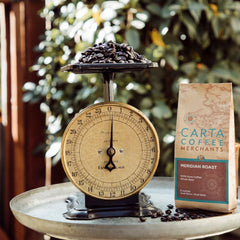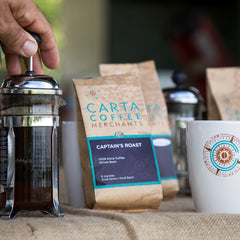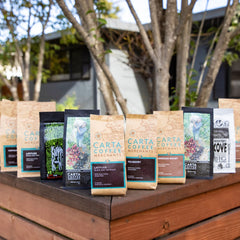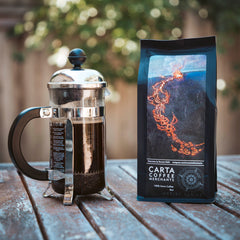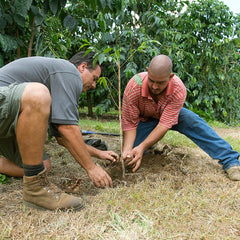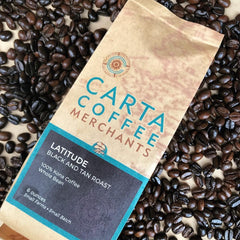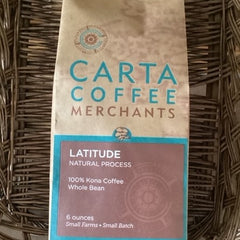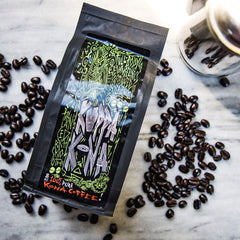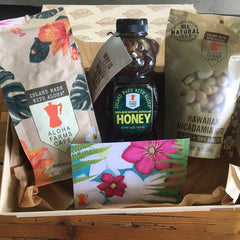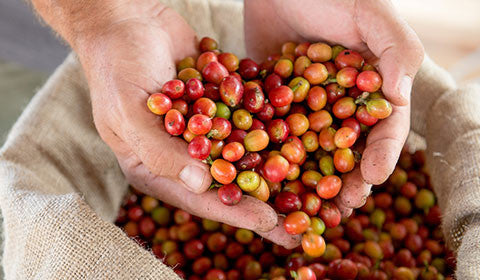Posted on

Have you ever wondered what a day in the life of a Kona coffee farmer is like?
It’s far from romantic. The farmers don’t have time to relax and sit on their porches, sipping a delicious cup of Captain’s Roast while watching their coffee beans grow and mature.
Being a Kona coffee farmer in Hawaii is a labor-intensive process where making sure the coffee trees are protected, and keeping pesky pigs and other vermin out of the plantation are just a few of the daily duties. During harvest season, work can go on for 24 hours a day.
The Walk
A typical day during the harvest starts with the farmer walking his entire farm. He’s looking specifically at the color of the cherries on his coffee trees. It’s important to remember that the coffee bean comes from a fruit that resembles a cherry. When they are ready to be picked, the color of the cherries can range anywhere from a blood red to a deep burgundy.
In Kona, farms can be picked multiple times as the farmer tries to only pick the red cherries. The skin of a coffee cherry is thick and bitter tasting. The fruit beneath is very sweet and has a grape-like texture. The fruit grows in clusters, so picking cherries in this way can only be done with a deft hand and a keen eye.
The Pick
Certain Kona coffee farms, such as Carta Coffee, will pick during the day. In the early evening they will start processing the coffee cherries that were picked earlier that day. It takes a trained eye to spot cherries that should be picked – and those that should be left to be picked at a later date.
Cherries need to be processed within 24 hours of their picking. Otherwise they can go bad and negatively affect the quality and taste of the bean inside. Picking cherries is a labor-intensive job, especially in the humid Hawaiian climate where humidity can regularly reach 100%.
As the day progresses, the farmer, his family, and even some hired local hands will pick several sacks of coffee cherries. Once the pick is done for the day, the cherries will be processed.
Processing techniques vary from farmer to farmer. Usually the red cherries are soaked in water. After a certain time period, the waterlogged skins are removed and separated from the beans, which are then washed again.
Fun fact: the average Kona coffee tree will yield about 13lbs of raw cherries. That makes for about 2lbs of roasted coffee. When you order 2lbs of Kona coffee, you’re literally buying the entire yearly yield from a single coffee tree!
The Rake and Dry
Throughout the day, the moist beans must be raked evenly and uniformly. Every day at pre-determined times, the farmer grabs a hand-held rake and starts to expertly rake the beans so that they have a chance of drying equally. This labor-intensive method is the preferred way to dry the beans.
The beans also need to be raked in order to keep mold and rot out. In some cases, the raking process can take weeks.
Other duties
In addition to picking, processing and raking the beans, the farmer must also concern himself with year-round maintenance. Farm equipment may break down and need to be taken into town for repairs. Water lines can spring a leak and the farmer must be handy with a patch.
Weeds must also be kept under strict control. They siphon off the precious nutrients the rich Kona soil has to offer. If the weeds are left unchecked, the coffee trees would only get a fraction of the nutrients they require.
Pests are a concern as well. Wild pigs are abundant on coffee plantations and can damage a coffee tree in a matter of a few minutes. Other pests such as ants and harmful bugs must be kept away. The wind sweeping off the Pacific Ocean can also wreak havoc by blowing over coffee trees, which then need to be replaced.
Off Season
For farm-to-cup coffee companies like Carta Coffee, they need to sell their coffee year-round. This means that the farmer also must start and monitor the roast as well as manage packing and shipping orders as they come in to ensure freshness.
When the harvest season finishes, the farmer must also concern himself with fertilizing, suckering, and pruning the trees. There’s a lot of work that goes into keeping Kona coffee trees healthy and producing high-quality coffee beans year-round.
It takes hard labor and years of experience to successfully run a Kona coffee farm. The farmers that work their plantations have a passion for Kona coffee and their skill and arduous work are evident when you take a sip of premium Kona coffee. You will be instantly transported to Kona where you can literally taste the essence of the big island itself.

